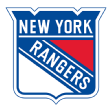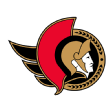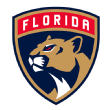Seven trades we'd like to see before the NHL trade deadline

As we approach the NHL trade deadline on Monday, there's some mild trepidation around the league that player movement on deadline day could be slower and less consequential than in years past. There are any number of reasons for that.
The standings currently look like the type of abstract art where paint is randomly splashed all over the canvas, resembling one jumbled mess, making it difficult to get a good read on where things stand. The byproduct of that? While we know that the Tampa Bay Lightning and Boston Bruins are good, and that the New Jersey Devils and Detroit Red Wings are bad, the majority of the league is crammed like sardines into a murky middle that can talk itself into at least being in the mix. The Chicago Blackhawks are a good example of this. By any objective measure they should be a seller, but they're close enough to a wild-card spot that they can't internally justify waving the white flag on the season.
The other complicating factor is that most of the highly intriguing big-name rentals who would otherwise be garnering all of the attention already find themselves on contenders, taking them out of consideration. The list of who's available has been whittled further by the moves we've already seen, with a number of teams getting their shopping done early.
That's not to say there aren't other meaningful moves to be made, because there always are when you're not paralyzed by fear. You wouldn't know it judging by how many teams seem to have "bottom-pairing defensemen in their 30s" atop their deadline wish lists, but there are a number of creative trades contenders can make if they freed themselves from the constraints of the status quo.
We're going to help nudge them in the right direction by cooking up a series of trades that make sense for teams that are either going for it this season, or are in a unique position to improve their teams in the long run.
These aren't necessarily trades that will happen or have been rumored. We're instead playing matchmaker for trades that should happen, largely for entertainment purposes, because this is supposed to be a fun time of year, after all. Don't get bogged down by minor details such as conditions on picks being exchanged or whether it should be a round higher than listed, because that's far less important than the general thought process itself. For the sake of facilitating trades, we also take liberties with players waiving no-movement clauses.
We did this same exercise ahead of last season's deadline, and the results were largely encouraging. We nailed the Kevin Hayes and Matt Duchene deals, and Marcus Johansson to the Bruins was one that we considered including before ultimately being left on the cutting room floor. The Sharks probably wish they had acquired a goalie, but they'll get another chance, albeit under wildly different circumstances (more on this later). The Predators eventually wound up paying a steep price for a former Senators star forward, but unfortunately for them it turned out to be the wrong one.
Here are the trades we'd like to see between now and Monday's deadline, in no particular order. Stats are courtesy of Natural Stat Trick, Evolving Hockey and Cap Friendly.
Jump ahead:
Palmieri to EDM | Kreider to COL
Athanasiou to DAL | Lehner to VGK
Pageau to BOS | Georgiev-Labanc
Trocheck-Ristolainen
Edmonton Oilers-New Jersey Devils
Oilers get:F Kyle Palmieri (half of his salary retained by Devils)
Devils get:F Jesse Puljujarvi's rights, Oilers' first-round pick in 2020 (lottery-protected), Oilers' 2021 second-round pick (if Palmieri scores 25-plus goals in 2020-21 or Puljujarvi doesn't appear in 41 of Devils' 2020-21 games), F Sam Gagner's expiring contract
The bar the Oilers need to clear to improve their supporting cast and ease the offensive burden off their top two centers is low, but acting on it at this point isn't necessarily that cut and dried.
Largely because of the financial situation his predecessor left him, Oilers general manager Ken Holland's hands are somewhat tied when it comes to improving the roster. He'll need to be creative in maneuvering around the cap, identifying situations where he can add a piece that moves the needle without actually taking on extra money.
The Devils make for a good trade partner in that respect, because they have loads of cap space, and have long ago signalled that they're willing to unload win-now assets in exchange for future capital by already trading Taylor Hall, Andy Greene and Blake Coleman.
They don't necessarily need to move Palmieri by the deadline. He's a productive player who's on a team-friendly deal for next season, and is a useful trigger man for Nico Hischier and/or Jack Hughes. But he's also going to be on the wrong side of 30 by the time he's due for his next contract, and considering the established price for players with term left on their deals, this could be their window to maximize a potential return for him.
Saying Palmieri would be a good fit next to Connor McDavid isn't exactly newsworthy, considering all the players we've seen thrive next to the best player in the world. But his skill set is one that would flourish in that role. He's already shown that he can thrive alongside a speedy puck carrier -- as he did with Hall -- and that would be his likely assignment in Edmonton. He excels in sniffing out soft spots in defensive coverage, and converting at an above-average rate.
It's easy to envision him scoring goals in bunches for the Oilers. Holland has already made it clear he doesn't want to mortgage future assets for a rental, which makes Palmieri doubly appealing. At a very manageable price tag and with a highly complementary set of skills, he improves the Oilers' chances for a long playoff run both this season and next.
Colorado Avalanche-New York Rangers
Avalanche get:F Chris Kreider
Rangers get: Avalanche's first-round pick in 2020, Avalanche's second-round pick in 2021, F Vladislav Kamenev and F Sampo Ranta
The Avalanche approach a crossroads at the deadline, trying to strike a balance between giving themselves a chance to make a run this postseason while maximizing the number of years they'll be able to continue a run with this core of young players.
GM Joe Sakic and the Avalanche have done a masterful job of drafting and accumulating a treasure chest of assets over the past couple of years, and they've afforded themselves the luxury of contending now and later. Part of the calculus has to be that the West seems wide open this season, without a single team in the way that doesn't have legitimate flaws.
The other is that we had an extended glimpse of what Nathan MacKinnon looks like in a playoff format last season, and it was devastating. His ability to eat minutes without losing steam is almost superhuman, and it hits any opponent with all sorts of problems. Adding a player with Kreider's skill set would be doubling down on what makes the Avs special, because he's a solid stylistic fit. Not only does he fit perfectly with the north-south rush style, but he's one of the few wingers in the league who can fly with MacKinnon while also matching his rare combination of speed and power.
For the time being, he'd also help cover for much of what they're missing with Mikko Rantanen on the shelf, helping to solidify their seeding in the Central as they jockey for home-ice advantage. When Rantanen eventually returns, coach Jared Bednar will have even more options to creatively mix and match. Rantanen's passing, alongside Nazem Kadri's shooting, would make for an intriguing secondary scoring line, as would the physicality of Kreider and Kadri pairing. Looking ahead to the playoffs, it would enable the Avalanche to match with any type of opponent, regardless of size and speed.
If Kreider is such a terrific power forward, then why would the Rangers trade him? They're hoping to be where the Avalanche are now in the near future, as they're in the final stages of the asset accumulation process. They've done a masterful job of replenishing their prospect pipeline over the past two drafts, making 18 picks in that short period after years of essentially punting the draft. A trade like this allows them to add to the nine they already have this coming summer, and could be the last time they're making a trade to stock their cupboard for a while.
But as they showed last offseason, draft picks are ultimately just a form of currency, and you don't necessarily have to use them to improve your team. Having extras allows you to be active in the trade market, and it allows you to jump at situations when players such asJacob Trouba and Adam Fox become available.
Dallas Stars-Detroit Red Wings
Stars get: F Andreas Athanasiou
Red Wings get: Stars' second-round pick in 2021, D Julius Honka's rights
The list of players having nightmarish seasons in Detroit isn't short, but arguably no one has felt the brunt of the team's decision to fully bottom out more than Athanasiou. The 31 goals he scored last season seem like a distant memory, as he's on pace for just 18 while easily leading the league with the NHL's worst plus/minus.
The minus-43 he sports is an eyesore, but it says just as much about his environment as it does about him. At 5-on-5, he has been on the ice for just 16 goals for the Red Wings, compared to 46 against, both because his individual shooting percentage has been sliced in half from last season, and also because the Red Wings goalies have managed to stop just 85.7% of the shots they've faced with him out there.
This isn't to say that he's blameless, because Athanasiou is a flawed player. He's the hockey version of baseball's designated hitter -- playing no defense. That's often blown out of proportion with skilled offensive players, but in his case, it's the truth. He's constantly looking to blow out of the zone and get on the attack, which would be fine if the Red Wings ever actually had the puck.
But it's up to good teams to identify imperfect talents and put them in a position to succeed while minimizing what they do poorly. What he does as well as almost anyone in the league is attack off the rush and push defenders back with his speed.
The Stars could certainly use more of that dynamic, considering only the Red Wings and Kings score less frequently at even strength. Athanasiou would be a tantalizing fit alongside Denis Gurianov (who creates rush chances at the ninth-highest rate among all regular skaters), given the similar traits he possesses. Those two coming downhill with the puck is something no defense would like to see, and together they could create the type of easy offense off the rush that the Stars need.
As for the other side of the ice, the Stars are one of the stingiest defensive teams in the league when it comes to structure, and if anyone is equipped to insulate Athanasiou's deficiencies, it's them.
Vegas Golden Knights-Chicago Blackhawks
Golden Knights get: G Robin Lehner (half of his salary retained by Blackhawks)
Blackhawks get: Devils' second-round pick in 2021, conditional pick based on how many games Lehner plays and how far Golden Knights advance, second-tier defensive prospect, F Cody Eakin
There's some revisionist history going on about last season's Blues and their improbable run going from last place to winning the Stanley Cup. Whether it's willful ignorance or simply trying to make a narrative fit, they were hardly just a team that got lucky and rode a hot goalie to the title. Having a competent goalie step in surely didn't hurt, but the facts suggest that the Blues were a genuinely dominant puck-possession team from the net out.
From Jan. 1 through the end of the regular season, the Blues were arguably the best 5-on-5 team in the league. In that 45 game sample they were:
- Second in shot attempt share (behind the Bruins)
- First in shot on goal share
- First in high-danger chance share
- First in expected goal share
The reason to point this out is that it's an important reminder when we point to the Blues as an example of how unpredictable the postseason can be, and how if you get in you have a chance to go on a miraculous run. Surprises like the Blue Jackets sweeping the Lightning can still happen, but there's a reason 5-on-5 play has been both the best descriptor of current excellence and the best predictor of future success.
The closest resemblance to that Blues team are the Golden Knights, who have trudged along in up-and-down fashion. They find themselves in a fight for Pacific Division seeding, which doesn't line up with their underlying numbers.
They're the NHL's No. 1 team in controlling shot attempts, and only the Lightning are responsible for a larger high-danger chance share at 5-on-5. While they're first in expected goal share, they're only 22nd in actual goal share, largely due to suspect goaltending. When you look at it from that perspective, Gerard Gallant's sudden firing was less surprising. If you sort by team save percentage, every team near the bottom that either isn't openly tanking or didn't have a first-year coach has made a similar in-season change.
There aren't many logical improvements available on the market, but there's one who checks a lot of boxes: Lehner. Of the 61 qualified goalies who have appeared in 15 games, here's how Lehner stacks up to both Golden Knights goaltenders and his peers:
- Robin Lehner: .918 save percentage (12th), plus-10 goals saved above average (10th), plus-3.1 goals saved above expected (15th)
- Marc-Andre Fleury: .905 save percentage (44th), minus-5.9 goals saved above average (47th), minus-12.8 goals saved above expected (53rd)
- Malcolm Subban: .893 save percentage (57th), minus-8.4 goals saved above average (51st), minus-4.8 goals saved above expected (36th)
Fleury would still be the No. 1 given what he's done for the Vegas franchise and the financial commitment over the next two seasons, but some healthy competition wouldn't be the worst thing in the world. Especially considering how mightily the Golden Knights have struggled to find a complementary backup, and how important each game will be the rest of the way. They can't afford to throw away any remaining points, nor can they justify leaning on Fleury to carry that burden.
As for the Blackhawks, should they decide to throw in the towel on the season and start to accrue assets, they're positioned to help facilitate trades with teams that are in financial bind. With Brent Seabrook and Calvin de Haan on long-term injured reserve, they have roughly $13 million worth of cap space at their disposal.
They'd be wise to use both that and the fact they have the two best rental options at goalie to their advantage, recouping some useful future assets. Lehner has been tremendous, proving he can produce regardless of the surrounding defensive environment. But if they decide to deal him, it would hardly preclude them from bringing him back on a long-term contract in free agency.
Boston Bruins-Ottawa Senators
Bruins get: F Jean-Gabriel Pageau
Senators get: Bruins' first-round pick in 2020, a conditional pick in 2021 based on how far Bruins advance this postseason, F David Backes' contract
The Bruins should be proactive by accomplishing two equally important things with one move right now:
- Add to a group that's currently the No. 1 seed in the East and looks poised to make another long playoff run
- Clear out the remainder of Backes' cap figure so they have the means to cover not only the pay raises of their restricted free agents (Jake DeBrusk, Matt Grzelcyk and Anders Bjork), but also put in a competitive offer to retain Torey Krug once he hits the open market
In terms of roster upgrades, the natural inclination is to look for someone who can bring a similar element to what Marcus Johansson brought last spring. His ability to serve as a secondary playmaker was a much-needed shot in the arm for a team that's constructed like Boston. He thrived at transitioning the puck through the neutral zone, helping get the Bruins into dangerous areas on the ice.
When I was thinking of ideal trade targets for the Bruins this go-around, Pageau admittedly wasn't my first choice. Tyler Toffoli would've been a candidate, but the Canucks swooped in and nabbed him already. That's a shame for Boston, because this year's crop of playmakers who are also rentals isn't particularly impressive in quality or quantity. Taking a home run swing at Kreider is also an option, but the Bruins' prospect pipeline isn't particularly flush with talent, which would complicate making a move of that magnitude.
Where Pageau does fit in with the Bruins is that he's an ace defender in his own zone and can win puck battles. In a way, that's the first step in any type of transition attack, so his services there would come in handy. He'd also provide them with another center, which would give Bruce Cassidy some added flexibility when it comes to taking some of the grunt work off David Krejci's plate and allowing him to focus on his own playmaking.
Pageau is a risky long-term investment this summer because of his inflated shooting percentage, but in the short run, a player who can provide offense akin to his 14 5-on-5 goals would give the Bruins some extra punch offensively. Not only have the trio of David Pastrnak, Brad Marchand and Patrice Bergeron combined for over 46% of the team's total offense, but Charlie Coyle and Jake DeBrusk (each with 11) are the only other Bruins with more than eight 5-on-5 goals on the season.
When you think of who would be particularly interested in a contract that's structured the way Backes' is, Eugene Melnyk and the Senators are the first to come to mind. The $6 million cap hit is actually a luxury item for a team like the Senators, who are going to legitimately struggle to reach the mandated cap floor given all of the money they have coming off the books this summer. If he remains on the team, he gets paid $4 million in real dollars for the final year on his deal because of the back-diving nature of the contract. If he gets bought out this summer, the cap hit stays, but Melnyk will pay out $2 million total spread over two seasons.
The only real obstacle is that Backes has an eight-team trade list built into his deal that allows him to control his eventual destination. Playing for the Senators presumably isn't particularly appealing to him given the stage of his career, but whether it's serving as a veteran presence there or being bought out and going elsewhere, it's likely his best bet for getting back into the league at this point.
New York Rangers-San Jose Sharks
Rangers get: F Kevin Labanc
Sharks get: G Alexandar Georgiev
The trade is one-for-one. When running this trade proposal by people in the league, I couldn't shake the feeling that one of the teams would need to attach some kind of draft-pick sweetener to even up the value. But, I couldn't decide which one would need to do so, which means we've stumbled upon something intriguing for both sides here. The main issue is that opinions on young goalie assets such as Georgiev vary wildly, making it tough to get a good read on what the market is.
The Sharks need to do something to make sure this season doesn't happen again. Their porous defensive system is one thing, but it's pretty clear that expecting Martin Jones to be able to turn his performance around individually isn't happening at this point. We're running on over 100 games of this being his new standard, and it hasn't been pretty.
The issue is that they're financially locked in to Jones for the foreseeable future, which means it's imperative that they find a cost-controlled alternative that has the realistic upside to come in and give them a better chance to win games despite the aforementioned defensive flaws.
That's exactly what Georgiev is at this stage of his career. While his raw .912 save percentage this season -- and .914 career mark -- aren't particularly eye-popping, those numbers need to be adjusted because he's been playing in one of the few environments in the NHL even more challenging for goalies than the one San Jose has been.
His 4.1 goals saved above expected this season is the league's ninth-best figure, coincidentally sandwiched by teammates Igor Shesterkin (plus-4.9) and Henrik Lundqvist (plus-3.8). Georgiev is 24 with limited tread on his tires, and the Sharks should theoretically be able to lock him in to a reasonable contract (he's a restricted free agent this summer). At the very least, he's shown that he'll be able to hold up under the fire of the high quality and quantity of shots, without completely caving in the way Sharks goalies have these past two seasons.
The Rangers are dealing from a clear position of strength here, currently blessed with an embarrassment of riches at the goalie position. But they also need to do something to clear the path for Shesterkin to get as many starts as he can handle, and Lundqvist likely isn't going anywhere between now and the end of next season. Even if Georgiev shines for the Sharks (or elsewhere) down the line, the Rangers have a blue-chip young goalie in Shesterkin to make up for any seller's remorse.
Brooklyn native Labanc is a fascinating player because no one's bank account took a bigger hit than his did when he decided to help the Sharks out with the cupcake one-year, $1 million dollar prove-it deal he signed last summer. It raised eyebrows, and it serves as a valid reminder of why every player should try to get what's theirs while they can.
Not that he's been especially effective this season, but things have been such a mess in San Jose from the jump with injuries and precipitous declines of its aging stars that it's nearly impossible to accurately evaluate his play in a vacuum. He's only 24 as well, is quite gifted as a playmaker, and could neatly slide into the potential openings the Rangers might have up front.
With both players hitting restricted free agency this summer -- and needing deals that'll presumably see them receive significant pay raises -- it makes sense for each team to pull the trigger on a deal now more so than waiting until the offseason. That way they can bring them in, see how they fit in their new surroundings, and get a head start on the negotiations.
Buffalo Sabres-Florida Panthers
Sabres get: F Vincent Trocheck
Panthers get: D Rasmus Ristolainen
I have to confess something: I don't totally understand the logic behind why Trocheck would be so publicly available, but considering that we've heard multiple reports that suggest that's the case, let's run with it.
Part of it surely has to do with the fact that the Panthers have already shown themselves to be a reactionary organization that makes personnel decisions on a whim, and they're presumably underwhelmed with Trocheck's pace of 14 goals and 50 points, both of which would mark personal lows over the course of a full season.
While Trocheck has understandably struggled to return to full form since his gruesome ankle injury two seasons ago, things outside of his control have changed, too. With Trocheck on the ice at 5-on-5 this season, the Panthers are still winning the territorial battle. Part of why he shows up as a minus player is because the goalies behind him have stopped just 88.7% of the shots they've faced, which ranks in the bottom 10 of nearly 500 qualified skaters this season.
But the biggest differentiator between this current version of Trocheck and the one who broke out with 31 goals and 75 points in 2017-18 is usage. Back then he led the team in ice time on the power play, taking advantage of that to score 13 goals and 27 points with the man advantage. At 5-on-5, he played roughly 500 minutes with Jonathan Huberdeau, easily his most talented linemate.
Compare that to this current season, where he's not on the top power-play unit (which is one of the best in the game), while being flanked most frequently with Brett Connolly and Noel Acciari at 5-on-5 (and recently with a literal defenseman, in Mark Pysyk). While Trocheck has never been a high-efficiency shooter, he's currently down at 7.1%, which is the 12th-worst figure of any forward with north of 100 shots. Even if he were in the ballpark of the 10% at which he converted during his career season, that would add another five goals to his total right now.
While it's distinctly possible that he'll never be able to replicate the production he once had, it's fair to question how much of that is on him and how much of it is on the position the team has put him in. If the medical records check out and it's more of the latter, then it presents a perfect opportunity to buy low for someone who can properly value and use his skill set.
Enter the Sabres.
Above all else, Buffalo GM Jason Botterill's biggest failure in his time running the team has been his inability to find viable help for Jack Eichel to ensure the Sabres can stay afloat when he's not on the ice. That's been particularly true ever since they panic-traded Ryan O'Reilly last summer, opening a revolving door down the middle beyond Eichel.
Botterill drafted Casey Mittelstadt with the hope he would be the long-term answer, but thus far he's proved quite inadequate. Botterill's biggest move last summer was signing Marcus Johansson, who has shown himself to be much more effective as a winger. He also drafted Dylan Cozens, but it looks like it'll be a while before Cozens can fill that role.
Opportunity knocks for Botterill and the Sabres, especially if they can kill two birds with one stone by salvaging some value for Ristolainen before the window to do so is fully shut. By doing so, they'd be dealing from a position of surplus to address a legitimate area of weakness on the depth chart.
Ristolainen is the prototypical example of the divide between what the eyes tell you and what the results say. If you catch him on the right play, he looks terrific, but for whatever reason it doesn't necessarily add up the way you'd think it would. There are people around the league who still seem to be blinded by his physical tools and occasional flashes of brilliance he displays with the puck, but the Sabres are worse off with him out there. At age 25 -- with nearly a 500-game sample at this level -- it's long past time to start coming to terms with the reality that this is just the player he's going to be at this point.
Whether it's buying low or simply acknowledging a sunk cost and moving off of it, these are the types of situations on which GMs around the league should be pouncing. I picked the Sabres as an example, but there are any number of teams that should be trying to take advantage of a glorious opportunity that appears to be materializing here.
I'd also include the Sharks, who should be proactively trying to make sure this dreadful season was a one-off, and not a sign of things to come, by shedding any big-money investments they have on declining players. Marc-Edouard Vlasic would be an ideal candidate, because it's scary to think what he'll look like over the next six seasons when he's still making $7 million per season, if he already looks the way he does at 33. The same goes for the Blackhawks with Duncan Keith, although similar to the Sharks with Vlasic, they'd need to find a compelling way to get the player to waive the no-move clause he wields.
While we might look at those players and their contracts and shudder, public opinion of how valuable they once were as defenders hasn't necessarily caught up to the present-day reality of how much they have left in the tank in 2020. With these things, all it takes is one team to throw caution to the wind and desperately double down on the situation it has already created for itself.
That person might very well be Panthers GM Dale Tallon, who has shown no real regard for the future, or what it'll look like in Florida based on the way he threw money around last summer. Otherwise he surely wouldn't have given $70 million to a goalie in his 30s during a time when the rest of the league is going in the opposite direction. Having already hitched his wagon to this particular group of players, all Tallon cares about is trying to make it work right now. If he thinks a player can help accomplish that, concerns about future value won't be as much of a concern.
Someone could get themselves a promising young player in Trocheck for a bargain-bin value.




















